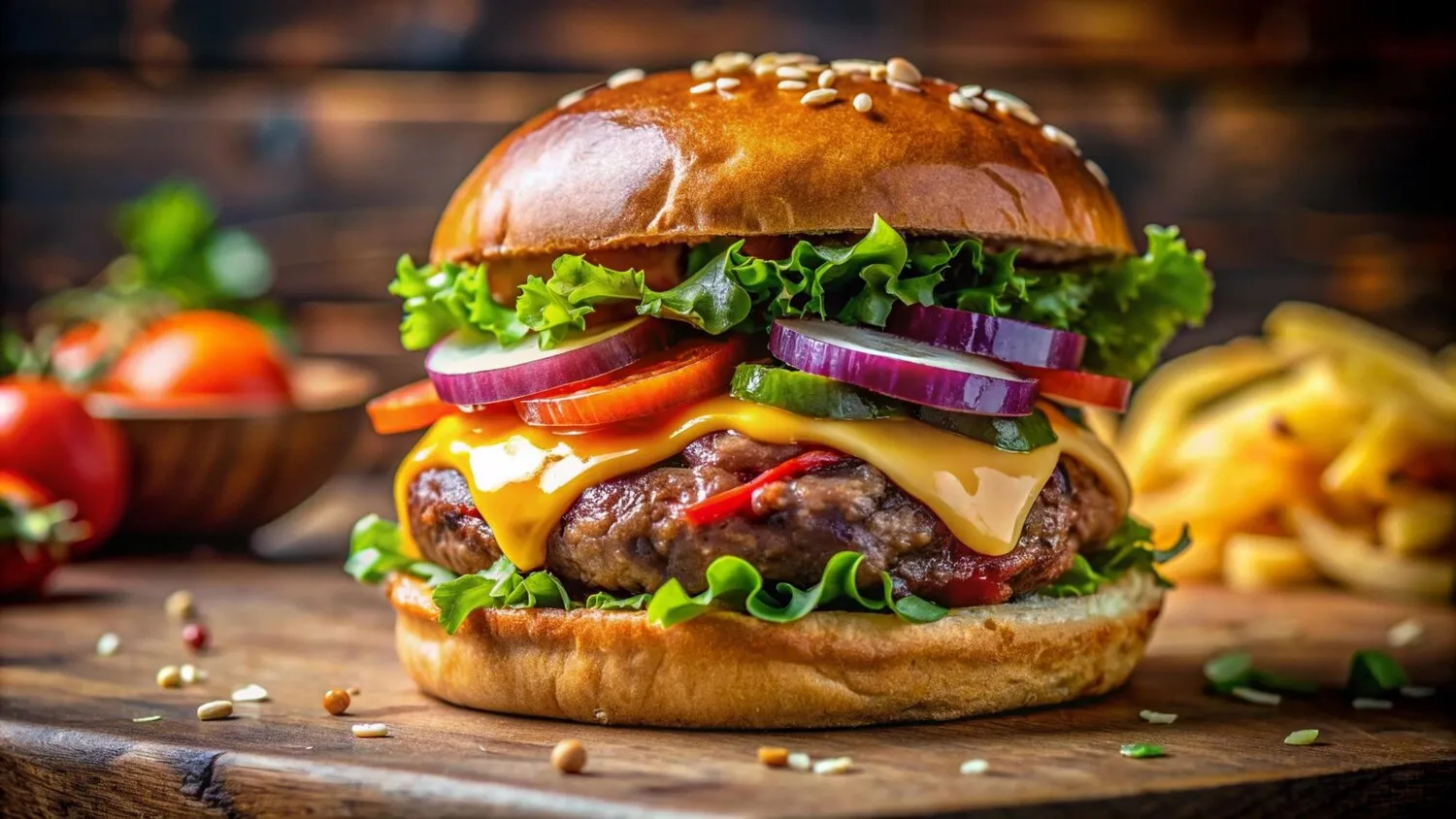
Burger
Various burgers with different toppings.
Nutrition Facts
* The % Daily Value (DV) tells you how much a nutrient in a serving of food contributes to a daily diet. 2,000 calories a day is used for general nutrition advice.
The Rusty Putter
The burger's roots can be traced back to Hamburg, Germany, where ground beef patties were common. However, the concept of serving these patties in a bun, the defining characteristic of the modern burger, originated in the United States during the late 19th and early 20th centuries, with numerous individuals and establishments claiming its invention. The rise of fast-food chains in the mid-20th century solidified the burger's place in American cuisine and popular culture.
The burger is deeply embedded in American culture, representing convenience, affordability, and casual dining. It is a symbol of American fast food and is often associated with backyard barbecues, sporting events, and family gatherings.
Fast Food Icon
The burger is synonymous with American fast food, with chains like McDonald's and Burger King built around its popularity. It represents a quick, inexpensive meal option for millions.
Backyard Barbecues
Burgers are a staple of backyard barbecues, representing a casual and communal dining experience. The act of grilling burgers is often a social event in itself.
Regional Variations
Different regions of the United States have their own unique burger styles, such as the Oklahoma Onion Burger, the Juicy Lucy from Minneapolis, and the green chile cheeseburger of New Mexico, demonstrating the burger's adaptability and regional pride.
Customization and Individuality
The burger offers endless possibilities for customization, allowing individuals to create their own unique combinations of toppings and flavors, reflecting personal preferences.
The flavor profile of a burger is a complex interplay of savory, umami, and often slightly sweet and tangy elements. The foundation is the beef itself, providing a rich, meaty flavor. The bun contributes texture and a subtle sweetness, while toppings add layers of complexity and contrast.
The core flavor comes from the ground beef, typically seasoned with salt, pepper, and sometimes garlic or onion powder. The Maillard reaction, occurring when the burger is cooked, creates a deep, savory crust. Toppings such as cheese (cheddar, Swiss, American), bacon, lettuce, tomato, onion, pickles, ketchup, mustard, mayonnaise, and various sauces (BBQ, aioli, special sauce) contribute distinct flavors and textures. Condiments add sweetness, acidity, and spiciness, balancing the richness of the beef. The bun provides a soft, slightly sweet counterpoint to the savory elements.
Beef Blend Matters
Use a blend of ground chuck (80% lean) and ground sirloin (20% lean) for optimal flavor and fat content. Avoid overly lean ground beef, as it can result in a dry burger.
Don't Overwork the Meat
Gently form the patties, avoiding excessive handling, which can lead to a tough burger. A light touch is key to a tender result.
Sear for Flavor
Use a hot pan or grill to create a flavorful sear on the outside of the burger. This enhances the Maillard reaction and adds depth of flavor.
Toast the Bun
Toasting the bun prevents it from becoming soggy and adds a pleasant textural contrast.
Proper Topping Placement
Consider the order of toppings to maximize flavor and prevent slippage. For example, place cheese directly on the hot patty to melt it evenly.
Rest Before Serving
Allow the burger to rest for a few minutes after cooking, which allows the juices to redistribute and results in a more flavorful and moist burger.
Explore additional American dishes and restaurants
Explore AmericanDiscover top dining spots and culinary experiences in Chestermere.
Explore ChestermereLearn more about the food culture, restaurant scene, and culinary heritage of Canada.
Explore Canada